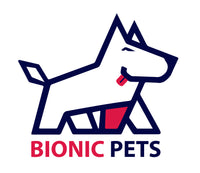
When we welcome a new furry family member into our homes, we do so with the hopes of caring for them, bonding with them, and sharing some truly special moments.
The first few days of the “breaking the ice” stage are crucial for establishing a sense of trust and familiarity between the pup, its humans, and its new siblings. Aside from that, this stage is also essential for detecting any health peculiarities in the puppy.
Of course, every dog has its own personality; some might be more curious, playful, and agile to adapt to their new surroundings than other dogs. However, certain signs and symptoms can indicate something is affecting our pup's health.
According to the National Library of Medicine, internal hydrocephalus is dogs' most common brain malformation. This condition can develop into different stages and cause craniofacial dysmorphia to cervical pain in a puppy.
In the past, dog owners had limitations in treating their dogs' neurological conditions. Fortunately, today, dog parents can access non-invasive methods for giving hydrocephalus dogs a better life quality.

This blog contains the essential information every dog owner should know about hydrocephalus signs and symptoms, how to detect it, and what are the best possible treatments.
What Is Canine Hydrocephalus?
Hydrocephalus is the abnormal buildup and growth of Cerebrospinal Fluid (CSF) within the brain or skull cavities.
The name derives from the Greek hydrocephalus or "water on the brain," which refers to the CSF, the nutrient-rich and protective fluid surrounding the brain and spinal cord.
CSF accumulation generates greater pressure within the skull, which strains the brain's delicate structures. This elevated intracranial pressure might cause irreversible, lifelong brain damage and death.
Canine hydrocephalus can be divided into two categories:
- Congenital hydrocephalus: congenital disability
- Acquired hydrocephalus: occurs when the flow of cerebrospinal fluid is obstructed or altered by an infection, tumor, or edema.
Signs of Hydrocephalus in Puppies
To determine if your dog has hydrocephalus, you must recognize the condition's primary symptoms so you can get medical attention quickly. Below, you will find a list of the most common symptoms of canine hydrocephalus.
- Cervical pain
- Decelerated skeletal growth
- Severe craniofacial dysmorphia
- Distortion of the orbits
- Poor appetite
- Decreased muscle tone
- Respiratory difficulties
- Severe sleepiness and obtundation
- Bilateral ventrolateral strabismus
- Affective aggression
- Inability to become house trained
- Failure to handle any kind of stress
- Epileptic seizure events
- Difficulties for walking
- Unusual posture
Hydrocephalus is a broad condition that affects dogs differently; not all dogs exhibit symptoms immediately after birth; most show signs between 8 and 12 weeks. Some dogs may present the noticeable symptoms listed above, but others might only show signs of pain.
Additionally, certain toy breeds, such as the Chihuahua, Maltese, and Pomeranian, are more prone to this condition.
Should you notice any of these signs, we recommend seeing a trusted veterinarian immediately to get a professional diagnosis and begin the appropriate treatment.
Treatment for Canine Hydrocephalus
Hydrocephalus prognosis is condition-specific based on how long and severe symptoms persist. Alternative treatments for puppies with hydrocephalus, such as helmet protection and specific therapy, can improve their outlooks. Here is an example of our patient Princess wearing a Bionic Pets protective cranial helmet.

In the initial stages of hydrocephalus, the treatment focuses on lowering CSF production and inflammation. While in more difficult or persistent situations, dogs will require anticonvulsant therapy.
A Non-Invasive Alternative for Your Hydrocephalus Pup
If you are a caring pet owner, you can agree with us when we say that animals have the right to receive the same level of care as human patients. That same philosophy inspired us to create Bionic Pets: where you can find alternatives to giving animals the best life possible, even if they have mobility issues.
Years ago, the veterinary orthotics and prosthetics field was less developed than today. Thanks to Derrick Campana and our team's combined efforts during the last two decades, Bionic Pets offers custom-made prosthetics and orthopedic options to accompany dogs' and other animals' recovery and rehabilitation processes.
Our main goal is to educate our community and help as many animals as possible; for that reason, we offer one of the most cost-effective solutions in the market, utilizing the latest technologies for creating non-invasive alternatives for the treatment of hydrocephalus and other mobility limitations.
Our custom cranial helmet is an excellent alternative to protect the head and avoid pain for your hydrocephalus puppy. It can be designed according to your puppy's personality and is a much less expensive and less invasive approach to helping a pet live its life freely and to the fullest.
Click here to see an example of professional cranial helmet casting.
Disclaimer: Before making your order, consult a Bionic Pets team member or a veterinarian familiar with our products if your dog is eligible for this or other products.
Connect with our team today and start a journey toward a better future for your best friend.
